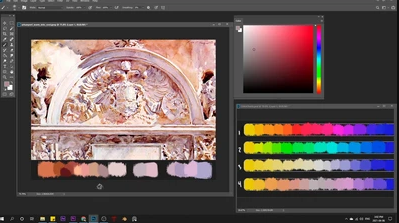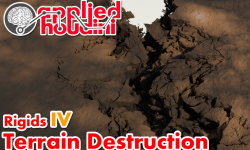Color Survival Guide by Marco Bucci
Release date:2021
Author:Marco Bucci
Skill level:Beginner
Language:English
Exercise files:Yes
The Color Survival Guide features a selection of color theories and color principles that I use almost every day as a commercial artist. I’ve selected the things that work and are reliable, time and time again.
In six (6) chapters, distinct principles will be explained in depth. In each chapter you will get a presentation featuring the background color theory of the principle in question, as well as a painting demonstration of where & how I use it in my work and how you can apply it yourself!

Chapter 1: Complementary Palette:
Learn how color moves by reducing your palette to two simple complementary colors. You will learn invaluable lessons of how colors “cross” from one side of the color wheel to the other, and how important that transition is. These principles can be applied to more complex palettes.
Chapter 2: Color Temperature: Warm vs. Cool
The mother of color theories. If you don’t know how color temperature works, you likely won’t get reliable color in your art. This chapter breaks down the essentials of how warm moves to cool (and vice versa) through photo studies and painted studies.
Chapter 3: Color Temperature: Moving Across The Spectrum
With warm vs cool under our belts, we now look at more ways that nature moves between the two extremes. At this point in the class we now have the tools to understand nature, paint it faithfully, as well as the tools to caricature it to our own aesthetics!
Chapter 4: Color Vibrations
Oftentimes we have to deal with elements that appear to have solid local colors. A red apple, for instance. But how does nature actually treat “flat” colors? This chapter will give you important models for understanding how to keep colors active and interesting, yet still reading as simple hues.
Chapter 5: Color Palettes
Now that we have a command of color theory and practice, we can use it to apply all sorts of different palettes. We began this class with a simple complementary palette, but now we have access to much more! We’ll look at how different palettes affect the mood of a piece, as well as how you might pair certain palettes with certain lighting conditions.
Chapter 6: How To Study
Watching a painting class is one thing, but we need to instill good practice habits in order for you to take this information and allow it to flourish over time, and in your own daily/weekly/monthly practice. This chapter will suggest simple ideas for practice, specifically targeting all the information from Chapters 1-5





 Channel
Channel






Thanks strawberry for this!!!!
Also, can you upload Foolproof Concept Painting with Airi Pan from Schoolism pleaseeee!!!
thanks a ton
hey the videos are not processing past the download page :((( i click on download now and instead of going to the next page, the 60 sec timer starts again, any idea why ?
THANKS SO MUUUCH!!